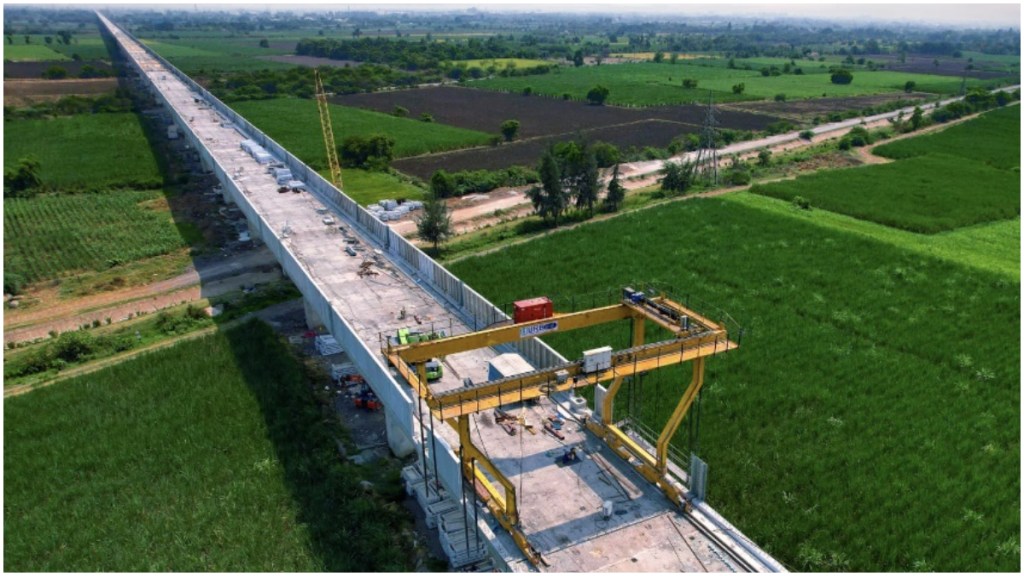National High-Speed Rail Corporation is installing noise barriers on the elevated section of the Mumbai-Ahmedabad Bullet Train Corridor. These barriers will help cut down the noise from the train and the structure during operations. Based on the Japanese Shinkansen technology, these barriers are basically concrete panels that will be 2 meters high and 1 meter wide going up on both sides of the viaduct.
How will Noise Barriers work on Bullet Train Corridor?
First and foremost, the noise barriers are cleverly designed so they won’t block the view for passengers enjoying the train ride. The noise barriers will bounce and spread out the sounds made by the train. This includes the aerodynamic noise from the train moving at high speeds and the noise from the lower part of the train, mainly from the wheels running on the tracks.
By doing this, the barriers help keep the noise level down, making the ride quieter for passengers and reducing the sound impact on nearby areas. These barriers are designed to manage and minimize the noise effectively, ensuring a more comfortable and peaceful journey for everyone on board.
Viaduct through residential areas to have taller noise barriers
The viaduct through residential and urban areas will have taller noise barriers, reaching 3 meters high. Along with the 2-meter concrete panels, there will be an extra 1-meter translucent polycarbonate barrier.
The train’s double-skin aluminum alloy body keeps things quieter inside, while its long, sharp nose reduces aerodynamic drag and blasting sounds from micro pressure waves when exiting tunnels.
Over 465 km of the 508 km long MAHSR route is elevated on a viaduct.
